How to Buy the Best Camera for Your Needs
Quick question: what’s more complicated, buying a house or getting married? Answer: neither, it’s buying a camera! That’s right, and I wrote this guide because if you don’t go about it right, then one day you’ll realize you’ve made a horrible mistake and you’ll give up photography. Okay, that could be an exaggeration. The truth is, buying a camera is quite easy once you know a few essential details.
Table of Contents
What to Look for in a Camera
People say all cameras are good these days, and that’s definitely more true than it’s ever been. Pretty much any camera made in the last few years can produce amazing pictures, and if you had to use a random camera, chances are you could make it work.

Nonetheless, there are still features that vary among models that can make your job as a photographer a lot easier. But what feature do you look for first? Although all modern image sensors produce great quality, there are six main points I like to think about when it comes to selecting a camera:
- Lens Selection: Do you need specialized lenses like supertelephoto primes or tilt-shift lenses? In this case, I’d stick with Canon, Sony, or Nikon. Sony also has amazing third-party lens support.
- Video Features: Do you need 4K 60p, log/Raw video, zebras, vector scopes, unlimited recording, or anamorphic support? Here Panasonic cameras are a strong contender.
- Autofocus Ability: Do you need to capture fast and erratic action like wildlife or sports? The Canon R6, Canon R5, Nikon Z9, Sony a9/a9II, and Sony a1 are all excellent cameras, or you can get an older model DSLR like a Nikon D500 or a Nikon D5.
- Resolution/Megapixels: Will 20-25MP be enough or do you need the flexibility of 45MP or more? If you think you might need a ton of resolution, you’ll want to get a high-resolution full-frame camera like the Canon R5 or Nikon Z7II.
- Sensor Size: Do you need a large camera sensor like full frame or medium format? Or would you prefer a smaller APS-C or Micro Four Thirds sensor? Smaller camera sensors have some disadvantages in image quality, but they’re less expensive and have a crop factor that can be useful for sports, wildlife, and macro photography.
- Weight: do you want something lighter than a gold bar? In that case, smaller sensor cameras from Fuji, OM System/Olympus, or Panasonic would not only be lighter but less expensive also! Likewise, most mirrorless cameras are lighter than a comparable DSLR.
It’s a good idea to write your needs down and keep them in mind when looking at options.
If you’re ready to look at specific cameras, you can jump later in this article to the list of common and available cameras to get a better idea of the possibilities if you’re buying new. But if you’re not too familiar with brands, the next section will give you a better idea of what each company has to offer.
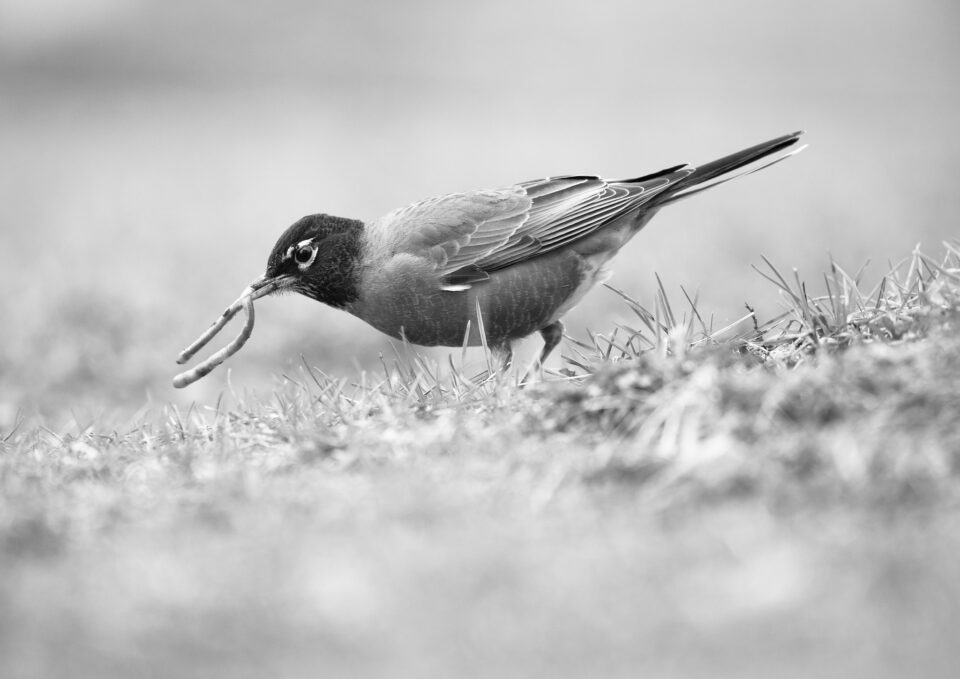
Brands at a Glance
If all camera brands used the same mount, then the next time when my uncle (who uses a Canon R5) asks me, “can I use your Nikon 500mm PF?” I could say yes! Although… who am I kidding? I’d still say no.
In reality, there are many different camera brands, each of which offers some exciting and unique features and which use their own mounts. This makes trying out different brands a bit difficult, so it’s a good idea to choose one that meets your needs.
If you like wildlife, and you think there is even a small chance you might want to get into the “big glass” like 500mm primes and above, stick with “big three”, or Canon, Nikon, or Sony. In fact, my general recommendation is to go with one of these three brands if you’re not sure where your photographic journey will take you. The other brands are a bit more specialized and can be good if you know exactly what you want.
Canon
Mounts: Canon RF (mirrorless full-frame), Canon EF-M (mirrorless APS-C) and Canon EF (DSLR)
Canon is one of the largest brands, and they already have an impressive mirrorless ecosystem.
- Canon has the R6, which is the most affordable full-frame mirrorless camera I would recommend for action photography. Their Canon 100-500 f/4.5-7.1 lens is also very light for a long zoom, so this lens with the R6 would make a very capable and lightweight wildlife system, albeit with a slow maximum aperture of f/7.1.
- Canon has the unique 600mm and 800mm f/11 DO lenses, which is the most affordable way to experience a decent level of quality at these focal lengths.
- Canon has the only first-party macro lens that goes beyond 1:1 magnification.
- Canon actually has two mirrorless systems that use different mounts: the RF mount (their main mount) and a more niche system, the EF-M, which is an APS-C-only mount.
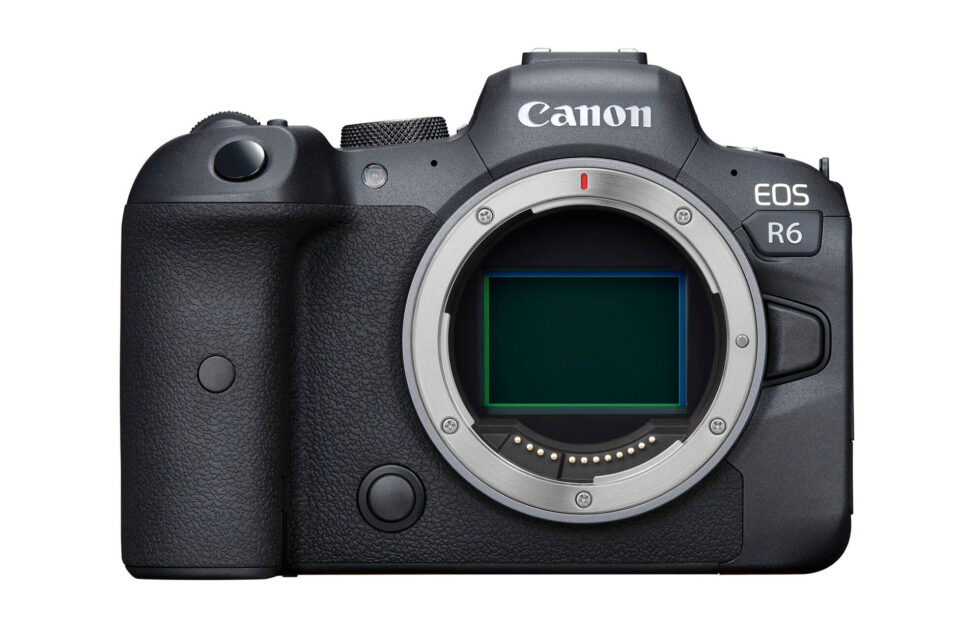
Fuji
Mounts: Fuji X (APS-C) and Fuji G (Medium Format)
Most people who look at Fuji will look at their X-mount APS-C system, although the G mount is one of the most popular ways to get into medium format.
- Fuji has a huge collection of APS-C lenses for its APS-C-only X-mount
- Both systems are mirrorless only, and Fuji does not make any DSLRs
- Many Fuji models like the Fuji X-T3 and X-T4 use the unique 26.1 MP X-Trans sensor
- Many Fuji cameras have a different approach to ergonomics, using more physical dials than most cameras. They also have a well-developed JPEG engine with film simulations
- The Fuji GFX 50S II is one of the more affordable ways to get into mirrorless medium format
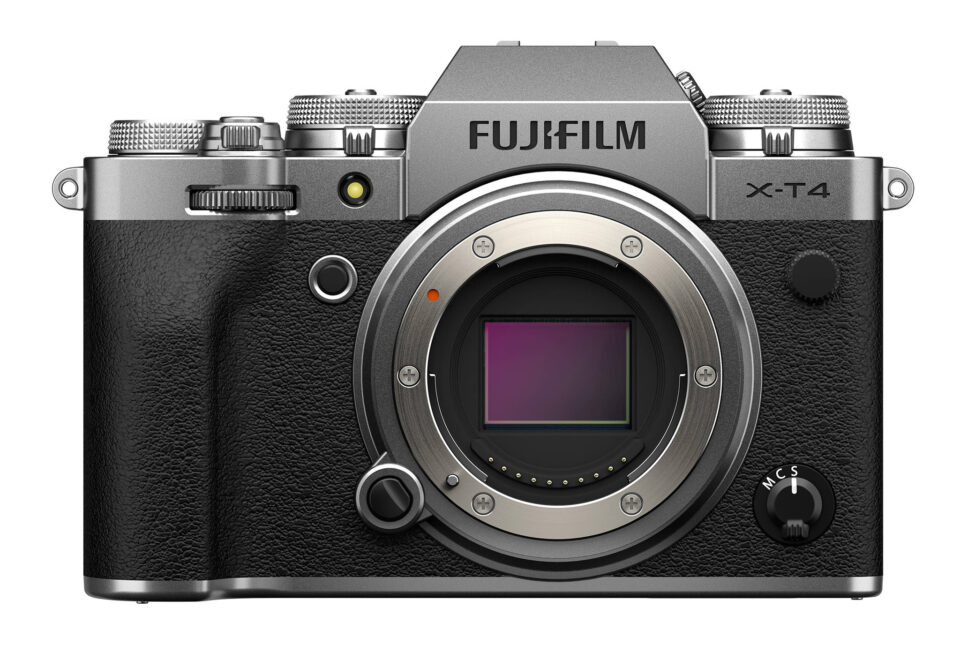
Nikon
Mounts: Nikon Z (mirrorless) and Nikon F (DSLR)
Nikon has been a little slower with their mirrorless system than other brands. However, they have recently made a huge splash with their relatively affordable Z9 flagship and unique 800mm f/6.3 lens.
- Has access to pro-level phase-fresnel lenses in the 300mm, 500mm and 800mm focal lengths. These are lightweight wildlife lenses that do not exist in any other brand (though Canon has a couple of “diffractive optic” or DO lenses at other focal lengths). This makes Nikon a very strong wildlife system.
- Nikon also has some unique supertelephoto zooms like the Nikon 180-400 (F-mount) and the Nikon 400 f/2.8 Z (Z mount) with built-in teleconverters.
- It has the least expensive high-resolution action-oriented full-frame flagship, the Nikon Z9.
- Nikon has a superb selection of f/1.8 primes.
- The Nikon Z system has the largest diameter and slimmest flange distance of any full frame mirrorless system today, allowing more flexibility for Nikon’s lens designers than any other brand (and allowing almost any other company’s lens to be adapted to the Z system with an appropriate adapter).
- Some Nikon cameras have a base ISO of 64 rather than the usual 100, which gives them the best dynamic range on the full-frame market, comparable to medium format.
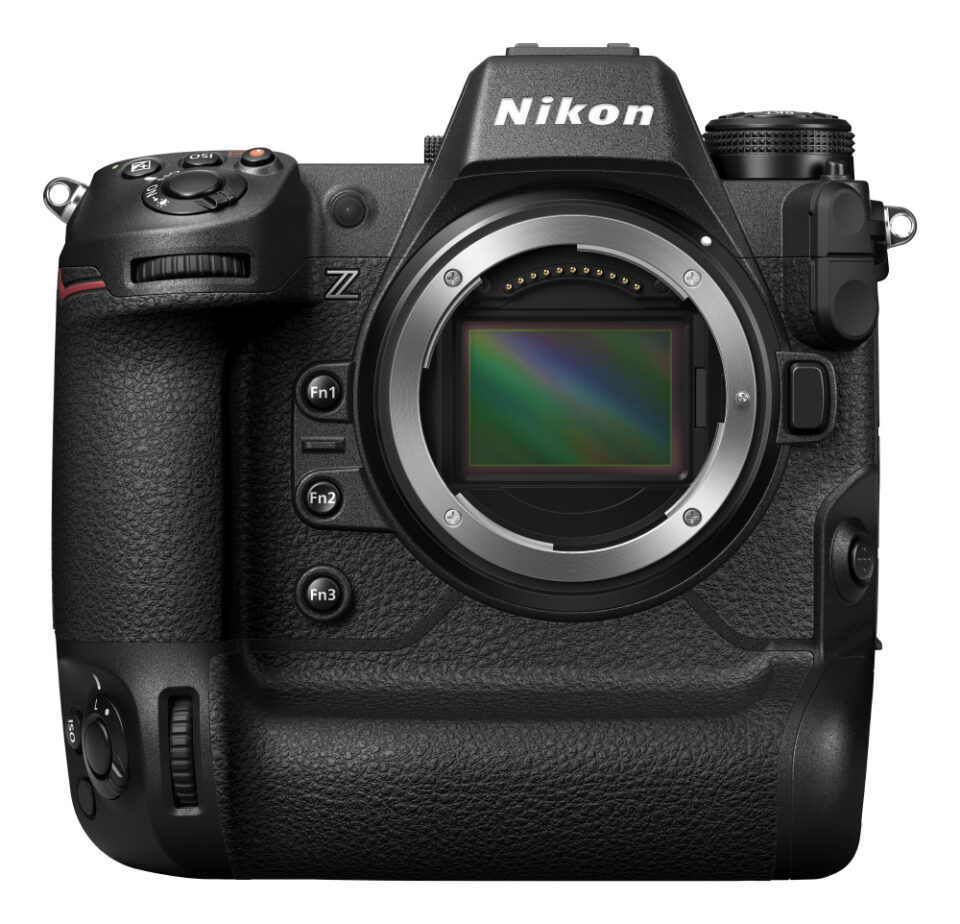
Olympus/OM System
Mounts: Micro four thirds (mirrorless)
Olympus recently sold their camera division to JIP, who are now continuing the brand under the name “OM System”. The O-M1, the first camera from OM System, is an action-oriented powerhouse.
Some interesting features of this brand are:
- The OM-1 is the only smaller sensor (below full-frame) mirrorless camera that has a stacked sensor, and it has by far the most advanced autofocus for a mirrorless camera with a smaller sensor
- Along with Panasonic, it uses the open micro four thirds mount
- Has almost 200 lenses available
- They have the unique Olympus 150-400mm f/4.5 TC1.25X lens for micro four thirds
- Because of the smaller sensor and lenses, you can build a very capable system with a micro four thirds camera that is not very heavy
- Olympus has been focusing on unique features more than most brands, as covered in this article.
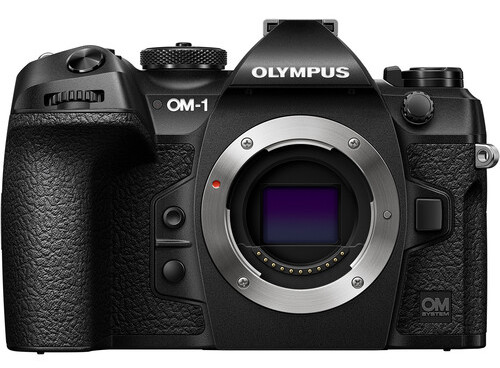
Panasonic
Mounts: Micro four thirds and Leica L (mirrorless)
Panasonic’s cameras are strongly video-oriented, but they also are fantastic stills cameras too. I personally use the Panasonic G9, which is one of my favorite cameras I’ve ever used, not just for its video features but for its intuitive and ergonomic interface.
- Panasonic’s GH series has been the top choice for many videographers, and the latest GH6 is packed with more video features than almost every other camera
- Panasonic makes cameras in two mounts: micro four thirds, and the full-frame L-mount. Both lines have very good video features
- Panasonic also makes many very good video-oriented lenses with minimal focus breathing and clickless apertures
- Like Olympus, Panasonic cameras provide a lot of power and newer features in a lighter package.

Pentax
Mounts: Pentax K (DSLR)
Pentax is currently the only company that is still showing commitment to the DSLR. Their most recent model, the Pentax K3 III, has many unique features such as the largest viewfinder ever for an APS-C camera.
- The Pentax K3 III is the most recently released DSLR
- Pentax has over 30 currently available APS-C specific lenses and over 100 lenses in total
- Pentax also has the K1 Mark II, their most recently released full-frame model
- The Pentax K mount is compatible with a wide variety of autofocus and manual film-era lenses, many of which have auto-aperture control

Sony
Mounts: Sony E (mirrorless)
Sony burst into the camera world and now has a strong selection of cameras and lenses. They have an open licensing model which makes it very easy for third parties to make lenses for their system. In fact, out of all the mirrorless systems, they have the most native lenses. What are some of the unique features of the Sony system?
- The Sony a7R IVA is the highest resolution full-frame mirrorless camera, a title that is actually shared with Sigma fp L
- Sony has implemented sensor-shift technology on some of its cameras, which (at the time of this article’s publication) is not found on comparable Nikon or Canon cameras. This technology shifts the camera sensor and takes multiple images, allowing you to quadruple an image’s resolution when photographing a nonmoving subject.
- Has well over 300 native lenses
- The only brand with a 200-600 zoom, although Nikon is supposed to release one eventually
- It has the highest-resolution flagship action camera, the Sony A1
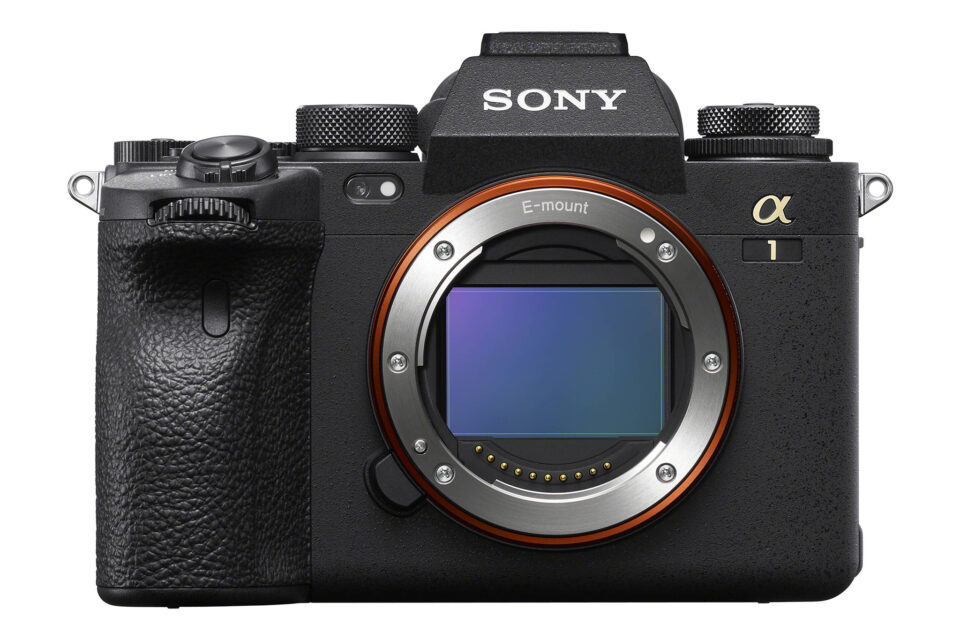
More About Lens Selection
If there’s one area where cameras are not equal yet, it’s lens selection:
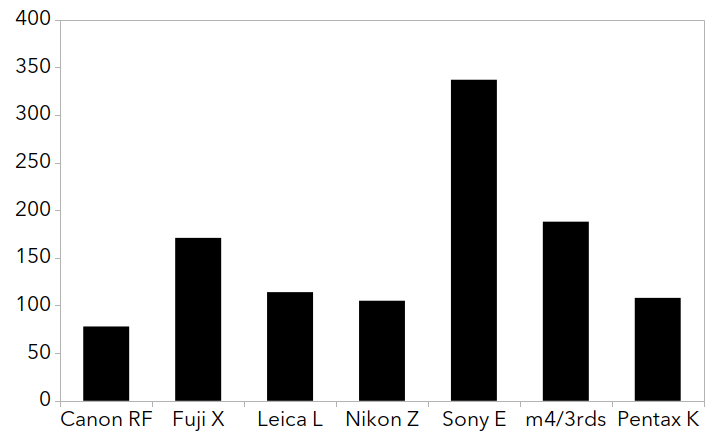
This just shows native lenses, not adapted lenses. (For example, the Canon RF and Nikon Z cameras also have easy access to adapted lenses from their DSLR counterparts.) However, there is no denying that Sony has the most native lenses by far, and that’s due to third-part lenses made via their open licensing model, as well as their comparatively long time on the mirrorless market.
Not shown in the graph above are Nikon and Canon DSLR systems, both of which have a large number of native lens options, especially taking third-party lenses into account.

But beyond pure numbers, there are some differences between the lens selection for each mount. Here are some examples:
- Canon RF has some unique items like the 600mm and 800mm f/11 DO lenses, which is the least expensive way to experience these focal lengths with respectable image quality. They also have access to a huge array of lenses from their DSLR EF mount. Unlike Sony who has a 200-600 zoom and Nikon who is planning one, Canon has a 100-500 which is also very good but much lighter.
- Nikon Z‘s Z lenses as very high quality lenses like its f/1.8 primes. Personally, I feel that while Nikon has fewer lenses than some other brands, you don’t have to think very much because all of Nikon’s lenses are a perfect blend of optical quality and affordability. Nikon not only has the unique 800mm f/6.3 (a phase-fresnel lens) but it also has access to many unique lenses in F mount.
- Sony E has the largest third-party lens support and currently has the highest quality superzoom (the Sony 200-600) that can reach 600mm. Because there are so many third-party lenses for Sony, it’s easy to choose the right blend of price, weight, and performance.
- Fuji has the largest selection of lenses specially for APS-C. With Fuji, you get a very well-made camera with lenses that are typically lighter than their full-frame counterparts.
- Micro four thirds lenses are designed for a smaller sensor, so they are some of the lightest lenses available. Micro four thirds also has one of the largest lens selections, with many option optimized for stills and for video.
- Pentax K contains a highly regarded set of “limited lenses” and the mount supports many manual-focus only legacy lenses from the film era.
- Fuji G lenses are in a class by themselves. Chances are if you are seriously interested in this medium format category, you already know more than I do and probably don’t need a guide.

Canon and Nikon are also the only brands to offer first-party tilt-shift lenses in their DSLR mounts, which can easily be used on their mirrorless cameras. However, Venus Optics does offer a variety of tilt-shift lenses native to Nikon F/Z, Canon EF/RF, Sony A/E, Pentax K, and Leica L.
The Options
There are so many cameras out there, and so it would be impractical and confusing to list them all. However, I put the most recent models from the major brands in a table. You can visit the B&H page of each camera by clicking on the name of the camera.
For each brand, I’ve also highlighted a recommending starting point in green. This is typically the middle of the road model that will more than satisfy almost every photographer except the ones who shoot fast action or demand a lot of resolution.
What about DSLRs?
With the exception of the Pentax K3 III, there are very few DSLRs that can be bought new. Some of these are the Nikon D500, the Nikon D850, the Nikon D6, and the Canon 1DX III.
Moreover, this stock is depleting rapidly. Based on this and the fact that stock and support for DSLR lenses is diminishing, most people would be better off buying a mirrorless camera if they are buying new.
However, there are still reasons to get a DSLR, one of them being price. If you are buying used, you can get a very capable camera for an excellent price. For example, the only mirrorless cameras that can touch the Nikon D500 in terms of autofocus performance are thousands of dollars more expensive than it, and a used D500 is a steal these days.

Just keep in mind that with a DSLR, you will not be able to use any new mirrorless lenses. However, a DSLR can still produce wonderful pictures for many years to come.
Best Places to Buy Your Camera
After intense deliberation and maybe some crying, you’ve finally arrived at a decision on the best camera for you. But where should you buy it? It depends on whether you want to buy new or used. Simply put, buying used will save you money in the long run, but it will occasionally be a greater hassle if something goes wrong.
Buying New
You’ve probably heard of B&H Photo, which is my first recommendation for a large retailer. Although they are based in New York, they ship all over the world and I have bought from them in both Canada and Australia.
Adorama is another popular store. Some other nationwide options in the United States are Best Buy and Amazon.
As far as large retailers go, I definitely prefer the customer service of B&H and Adorama over Best Buy and Amazon, with Amazon being the worst, but they are an option sometimes for new and in-demand items.
I strongly recommend trying out your local camera store and supporting them if they are decent. Not only will it help maintain the diversity of stores, but a good camera store will also allow you to try a few models in-store to help make your decision. A local camera store can also help you get hot newly-released items much faster than a large retailer like B&H.

It is also easy to buy from B&H and Adorama in Canada. However, certain items such as new Nikon cameras cannot be bought from the United States due to restrictions, so it’s good to look at the following Canadian retailers also.
- Henry’s
- Vistek
- The Camera Store
- London Drugs (Yes, is partly a drugstore but hey, they carry cameras like the Z9, A1, and R5 so who am I to argue?)
Here are some recommended local Australian stores:
If you live elsewhere in the world, I don’t have experience with the stores in your area, but suffice to say that there are camera stores in every country where you’re freely able to read our website, except maybe the Vatican City 🙂
Buying Used
Buying used is a little different. However, it is definitely worth considering because you can get get older but still very capable models. Personally, I buy more than half of my gear used, and I’ve never had any major problems.
For example, I recently saw a very lightly used Nikon Z7 on FredMiranda.com for just $1450, which is less than half the $3000 for a new Z7II, and the original Z7 might be all you ever need.
To take another example, you could get a used Sony a9 and a used Sony 200-600 together for about $4000. This is still $1500 cheaper than a new Z9, and the Sony combination would be more than enough for most wildlife!
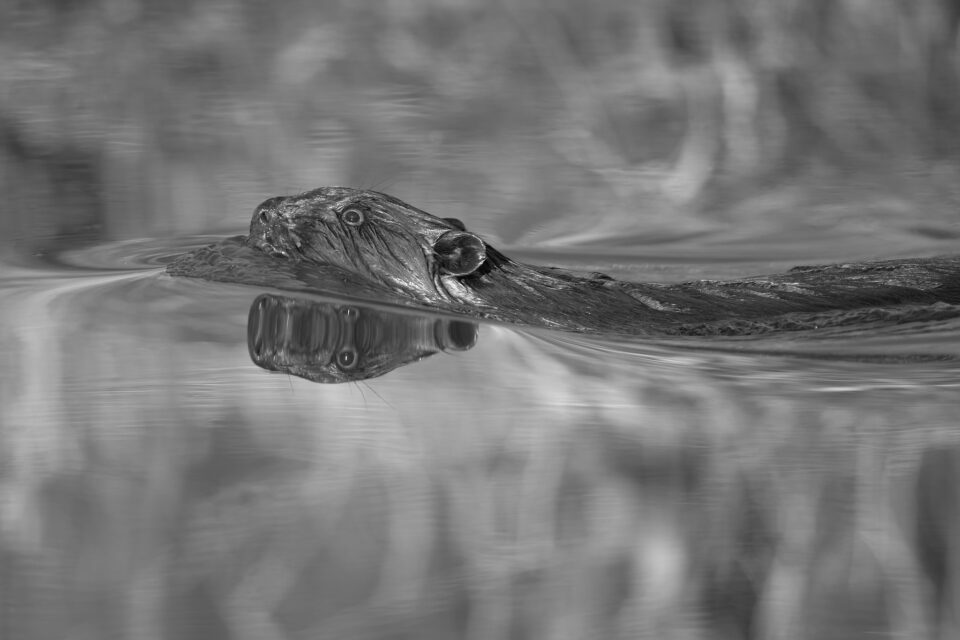
There are basically two ways to buy used: through a large retailer and through classified ads such as message boards, with the latter being cheaper. Stores like B&H, Adorama, and most camera stores in fact do carry used equipment, but here are two additional well-known and reputable places that specialize in used gear:
For first-time used camera buyers, I would suggest a large retailer with a return policy like B&H, Adorama, KEH, or MBP. I just checked KEH and there’s an excellent grade Sony A7III which is $1500… $1000 cheaper than a new A7IV! There are just so many good, lightly used cameras out there that most people never really have to buy new.
The other option is the classified ads or forums. These are more risky since many of them are final sale, and you never know what you might be getting. However, there are two places I do recommend:
- FredMiranda
- Pentax Forums (for Pentax gear mostly)
Both of these forums have seller review mechanisms, and I have used both of them. The Fred Miranda forum in particular has a very active buy and sell section, and you can just choose to buy gear from people who are active forum members and who have hundreds of positive reviews. The “customer service” from the highly rated members is very good and I would not hesitate to buy very expensive items from top sellers.

What about eBay, a.k.a. the “dark place”? Actually, I have also bought quite few items from eBay and I think as long as you stick to sellers with 100% feedback (or something very close to it), then it should not be a problem. However, I still prefer FredMiranda.com because you can actually buy from the same people with whom you argue about equivalence.
Nonetheless, be aware that there are some downsides to buying used. There are often no warranties, although sometimes those are transferable. Being used, the camera will probably have several thousand shutter actuations. Mechanical shutters have a finite life, and highly used cameras won’t last as long as new ones.
Conclusion
I still remember buying my first camera. It was a harrowing and stressful experience with endless deliberation over features. However, I found the remedy to this dilemma: just keep buying cameras. Trust me, it eventually gets very easy after the twentieth camera. But seriously, I (and probably many others) would be more than happy to vicariously spend your money for you, so leave any questions in the comments!




 Started out doing photography at the age of 6 using an uncle's old 1940 kodak brownie box camera. At 15 years of age, I decided to buy my very own 1975 Praktica SLR camera. I now shoot with a Nikon D850. I do unpaid TFP and commercial paid work.
Started out doing photography at the age of 6 using an uncle's old 1940 kodak brownie box camera. At 15 years of age, I decided to buy my very own 1975 Praktica SLR camera. I now shoot with a Nikon D850. I do unpaid TFP and commercial paid work.